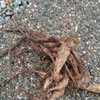single variegated hippeastrum seedling
haweha
18 years ago
Related Stories

GROUND COVERSNative Alternatives to English Ivy, Japanese Pachysandra and Periwinkle
These shade-loving ground covers are good for the environment and say something about where you are
Full Story
TREES11 Japanese Maples for Breathtaking Color and Form
With such a wide range to choose from, there’s a beautiful Japanese maple to suit almost any setting
Full Story
GARDENING FOR BUTTERFLIES3 Ways Native Plants Make Gardening So Much Better
You probably know about the lower maintenance. But native plants' other benefits go far beyond a little less watering and weeding
Full Story
MOST POPULARMeet a Lawn Alternative That Works Wonders
Carex can replace turfgrass in any spot, is low maintenance and adjusts easily. Add its good looks and you’ve got a ground cover winner
Full Story
MOST POPULAR20 Ways to Work White Magic in Your Yard
Create enchanting outdoor spots with fresh white fences, florals and furniture
Full Story
FUN HOUZZ14 Gardens Straight Out of Fairy Tales
Escape into landscapes that conjure the magical worlds of folklore and literature
Full Story


ninecrow
Amanda (asarumgreenpanda, z6MA)
Related Professionals
Carlisle Landscape Architects & Landscape Designers · Milwaukee Landscape Architects & Landscape Designers · Severn Landscape Architects & Landscape Designers · Suffern Landscape Architects & Landscape Designers · Dudley Landscape Contractors · Lakewood Landscape Contractors · Mission Landscape Contractors · New Braunfels Landscape Contractors · North Lauderdale Landscape Contractors · Pine Hills Landscape Contractors · Pleasant Grove Landscape Contractors · San Benito Landscape Contractors · San Bruno Landscape Contractors · Greenfield Landscape Contractors · Ansonia Landscape ContractorshawehaOriginal Author
hawehaOriginal Author
bluebonsai101
hawehaOriginal Author